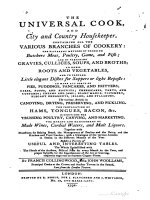poster-katelyn-cook-and-micah-coats-dpp-2017
Bạn đang xem bản rút gọn của tài liệu. Xem và tải ngay bản đầy đủ của tài liệu tại đây (1.38 MB, 1 trang )
A Phoswich Detector System to Measure Sub-Second Half-Lives using ICF Reactions
Micah Coats, Katelyn Cook and Mark Yuly. Department of Physics, Houghton College, One Willard Ave, Houghton, NY 14744
Stephen Padalino. Department of Physics, SUNY Geneseo, One College Circle, Geneseo, NY 14454
Craig Sangster and Sean Regan. Laboratory for Laser Energetics, 250 E. River Rd, Rochester, NY 14612
I. Abstract
The 3H(t,γ)6He cross section has not been
measured at any bombarding energy due to
the difficulties of simultaneously
producing both a tritium beam and target at
accelerator labs. An alternative technique
may be to use an ICF tt implosion at the
OMEGA Laser Facility. The 3H(t,γ)6He
cross section could be determined in situ
by measuring the beta decay of 6He
beginning a few milliseconds after the shot
along with other ICF diagnostics. A dE-E
phoswich system capable of surviving in
the OMEGA target chamber was tested
using the SUNY Geneseo pelletron to
create neutrons via 2H(d,n)3He and
subsequently 6He via 9Be(n,α)6He in a
beryllium target. The phoswich dE-E
detector system was used to select beta
decay events and measure the 807 ms halflife of 6He. It is composed of a thin, 2 ns
decay time dE scintillator optically
coupled to a thick, 285 ns E scintillator,
with a linear gate to separate the short dE
pulse from the longer E tail. Funded in part
by a grant from the DOE through the
Laboratory for Laser Energetics.
Thin, fast
scintillator
ONLY
III. Phoswich Detector System
Thick,
slow
scintillator
ONLY
Both thin and
thick scintillators
Target Chamber
The phoswich detector system, composed of
a thin, 2 ns decay time dE plastic scintillator
optically coupled to a thick, 285 ns decay
time E plastic scintillator, was used to
identify beta particles emitted by the 6He
decay. The figure at left shows the PMT
pulses created by an incident beta on each
component (dE, E, both) of the phoswich
detector system. 2D histograms of the dE and
E pulse heights (right) show a signature band
for collimated (top) and uncollimated
(center) monoenergetic 947 keV betas from
207Bi, and background (bottom).
VI. Results
The dE-E spectrum in Figure 1 was
used to identify 6He beta decays.
Figure 2 shows a histogram of these
beta events as a function of time,
giving a decay curve with a half-life of
789 ms ± 38 ms, in agreement with
previous measurements of 807 ms.
When the 9Be target was replaced with
graphite, the decay curve disappeared.
Since the PMT signals consisted of a
short dE pulse followed by a long E
tail, a linear gate was used to separate
the phoswich signals into the dE and
E components to be digitized.
Phoswich Detector System:
dE
E
PMT
Deuteron Beam
9Be
Target
Deuterated
Polyethylene
II. Introduction
The 3H(t,γ)6He radiative capture reaction
occurs in almost every practical
thermonuclear fusion scheme, and is
therefore important for both fusion
research and nucleosynthesis models. The
first step toward measuring this cross
section was to create and detect 6He. In
2016, 6He nuclei were created using the
9Be(n,α)6He reaction, and were detected by
measuring the 807 ms half-life beta decay
6He → 6Li + 𝑒 − + 𝜈
with a silicon detector telescope. This
success motivated the development of a
new dE-E phoswich detector system
capable of surviving in the ICF
environment.
V. Electronics
Additional
Target Ladder
IV.
9Be(n,
6
α) He
Experiment
The phoswich dE-E detector system was tested using the Tandem
Pelletron accelerator at SUNY Geneseo. A 2.19 MeV deuteron beam struck a
deuterated polyethylene target which emitted neutrons via the 2H(d,n)3He
reaction. These neutrons hit a thick 9Be target to create 6He nuclei via the
9Be(n,α)6He reaction. The beam was on for five seconds so the 6He particles
could build up in the 9Be and then quickly blocked by a Faraday cup to
measure the 6He beta decay curve. A latch circuit (right) started the data
collection when the count rate from a NaI detector located beside the
phoswich detector fell below a fixed value. When the beam was shut off, the
latch circuit signaled the femtoDAQ acquisition system to begin collecting
data for ten seconds. This process was repeated 160 times for better statistics.
Figure 1. The
dE-E histogram
for the 9Be target.
Red circles are the
expected dE and E
as a function of
beta energy. The
green box selects
betas from 6He
decays.
Deuterated
Polyethylene
Target
Latch
Circuit
Figure 2.
Beta count rate
as a function of
time for the 9Be
target. The bestfit decay curve
(red) yields a
half-life of
789.2 ± 37.8 ms.
VII. Future Plans
Now that we have shown that we can create and detect
6He with a detector system capable of surviving the
ICF conditions, our next step is some ride-along
experiments at LLE. If that proves to be successful,
we will propose our own TT shot at LLE.
Ride-Along
Experiments
Tritium Shot
at LLE
Measure the
Cross Section
of 3H(t,γ)6He









